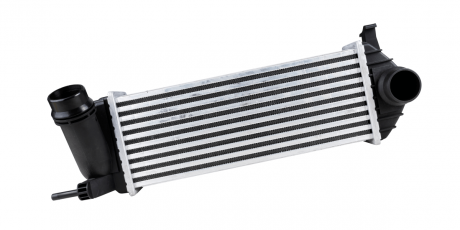
Automotive enthusiasts often rely on aftermarket products to modify their car’s internal system. They usually do this to get maximum horsepower and performance. Car drivers who are into racing primarily invest in transforming their vehicles.
A product like a turbocharged engine can dramatically help in increasing horsepower. But, what’s an intercooler, and how can it help optimize the power of turbo? Is it possible to run turbo without an intercooler? This article will explain everything, including the role of an intercooler, its functions, and its benefits. Stay tuned!
Role of an intercooler
Firstly, you must know that the turbocharged engine releases immense heat when it compresses air. Also, the compressed air becomes super hot. We know that there's always less oxygen present in the hot air. But, the engine needs a decent amount of oxygen. The combustion won't work without it.
So, now you would need an intercooler. An intercooler's job is to cool down the compressed air. It can bring the temperature down from 130°C to 60°C.
An intercooler not only cools the compressed air to increase oxygen but also protects the engine's internal parts from heating up and safeguards from an early detonation.
Why is an intercooler a must-have component?
An intercooler is a must-have component with a turbocharged engine. You must not run a turbo without an intercooler as it can completely ruin the engine. Also, you get a turbo for extra speed and horsepower. But, the compact air it produces becomes one concentrated ball of the hot air, which lacks oxygen.
So, what’s the point of having a turbo that can’t supply the engine with enough oxygen? That’s why you require an intercooler at all costs to make the turbo work efficiently.
Intercooler benefits in a nutshell:
Your engine gets an ample supply of oxygen to produce effective combustion, thanks to the intercooler that cools the hot air of the turbo.
It keeps the air intake system of the car cool and prevents untimely detonation.
It allows the turbo to boost power by compressing more air.
What are the possible outcomes of running a turbo without an intercooler?
We explained to you why an intercooler is needed for a turbo. However, if you insist on not using one, you can face severe repercussions. The highly compact hot air produced by the turbo would mess up the timing of the ignition in the combustion chamber. This is highly damaging for the engine.
Also, the heat can rise above 205°C in harsh climate conditions, damaging the other components in the engine. And the worse outcome would be no horsepower and poor performance. So, it is highly recommended that you install an intercooler with a turbo engine.
What is the price of an intercooler?
The price of an intercooler varies anywhere between 100$ to 500$, depending on your car’s model. However, an intercooler for high-end models will cost you more than $1000.
An expert mechanic can guide you on what type of intercooler is best for you to buy. Also, you mustn’t compromise on its quality as an efficient intercooler will make the turbocharged engine effective.
Conclusion
Suppose you have any plans to get a turbocharged engine, visit the mechanic and determine which intercooler will suit your car. Turbo can’t go on without an intercooler. So, you must get one.
Same articles

Bridgestone Potenza Re980as vs Michelin Pilot Sport A/S 3 (W- or Y-Speed Rated): What is better to choose?
GuidesIt's time to replace the all-season tires on your car, and you're trying to decide between

2020 Honda Ridgeline: Is it worth it?
GuidesThe 2020 Honda Ridgeline carves out its own niche among pickup trucks. It's not as burly as a full-size truck, but it has more towing and hauling capability than most crossover SUVs. This...

What are car speakers for and should they be installed?
GuidesCar speakers serve two main purposes. The first is to provide high-quality sound reproduction of music, and the second is to act as a safety measure by amplifying sounds from outside the vehicle...
